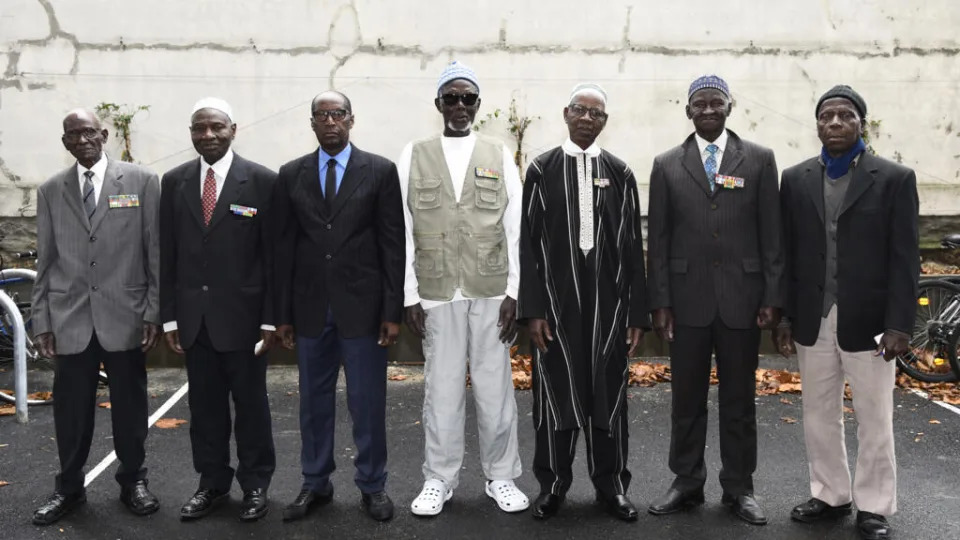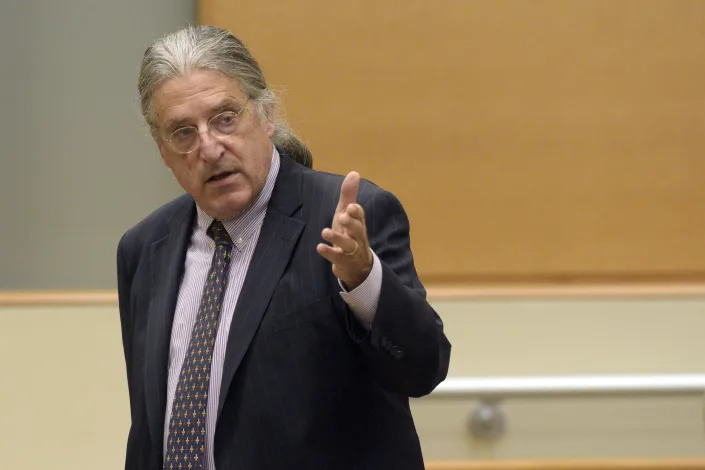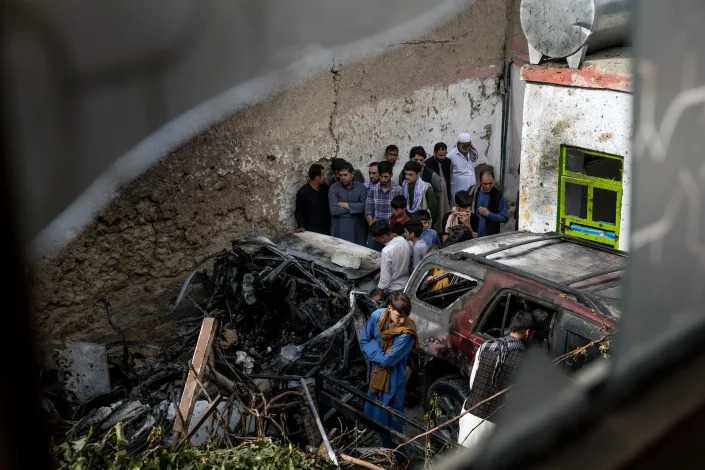Steph Brawn
Fri, 6 January 2023

Members of the Scottish Secondary Teachers Association (SSTA) held strikes in December and will do so again next week (Image: RADAR)
TEACHERS are set to go on strike in Scotland from next week with three unions engaging in industrial action over pay.
Here’s a guide to everything you need to know about why and when they are happening.
When are the strikes?
Primary school teachers who are members of the Educational Institute of Scotland (EIS) will stage a walkout on Tuesday, January 10.
Secondary school teachers from that union will then follow the next day alongside those from NASUWT and Scottish Secondary Teachers’ Association (SSTA).
READ MORE: Keir Starmer 'inspired' by Nicola Sturgeon, Douglas Ross claims
The EIS has also organised a separate 16 consecutive days of strike action from Monday, January 16.
The dates and locations for these are:
Monday, January 16 – Glasgow and East Lothian
Tuesday, January 17 – Perth and Kinross and North Ayrshire
Wednesday, January 18 – Orkney and Fife
Thursday, January 19 – Moray and North Lanarkshire
Friday, January 20 – Angus and East Dunbartonshire
Monday, January 23 – East Ayrshire and Dumfries and Galloway
Tuesday, January 24 – Stirling and East Renfrewshire
Wednesday, January 25 – South Ayrshire and Edinburgh
Thursday, January 26 – Midlothian and West Dunbartonshire
Friday, January 27 – Renfrewshire and Falkirk
Monday, January 30 – Aberdeenshire and Scottish Borders
Tuesday, January 31 – Highlands and West Lothian
Wednesday, February 1 – Clackmannanshire and Aberdeen
Thursday, February 2 – Dundee and Argyll and Bute
Friday, February 3 – South Lanarkshire and the Western Isles
Monday, February 6 – Inverclyde and Shetland
What do the unions want?
The unions are calling for a pay increase of 10% and have rejected the current deal on the table which would see most staff in classrooms receive a 5% pay rise. The lowest-earning teachers would get a 6.85% increase.
Talks are taking place on Friday between unions and the government, as further and higher education minister Jamie Hepburn insisted the pay rise offered to teachers was “very fair”.
Hepburn said combined with other pay rises it would mean salaries for “most teachers” have increased by 21.8% since 2018.
Asked directly by BBC Radio Scotland on Friday if teachers would be offered more money, the minister said a “very fair and affordable offer” had been made.
Could the strikes spread across the UK?
Teachers are voting on whether to take industrial action in other parts of the UK, with an NASUWT ballot closing on Monday for staff in schools and sixth form colleges across England, Scotland and Wales.
The NAHT union, which represents head teachers and other school leaders in England and Wales, has a ballot closing next Wednesday, while the National Education Union is balloting members until next Friday.
Teachers’ pay offer is ‘very fair’, minister insists ahead of more talks
Katrine Bussey, PA Scotland Political Editor
Fri, 6 January 2023

A Scottish Government minister has refused to say if more cash could be found for teachers in a bid to prevent further strikes – which have already closed schools across the country.
Talks are taking place on Friday between unions and the government, as further and higher education minister Jamie Hepburn insisted the pay rise offered to teachers was “very fair”.
The deal on the table would see most most staff in classrooms receive a 5% pay rise, although the lowest-earning teachers would get a 6.85% increase.
And Mr Hepburn said combined with other pay rises it would mean salaries for “most teachers” have increased by 21.8% since since 2018.
Teachers, however, have rejected the offer, with unions pressing for a 10% rise.
With members of the EIS, NASUWT and SSTA trade unions all due to strike next week – affecting primary schools on January 10 and then secondary schools on January 11 – Mr Hepburn was pressed on whether more cash could be found.
Asked directly if teachers would be offered more money, the minister said a “very fair and affordable offer” had been made.
Speaking on BBC Radio Scotland’s Good Morning Scotland programme, he stressed rising inflation meant the Scottish Government budget was now worth less than when it was set, adding that the requirement on ministers to ensure a balanced budget meant that “we don’t have fiscal latitude”.
Speaking about the proposal made to teachers, Mr Hepburn stated: “If you actually look at what we have offered, it is 6.85% uplift for the lowest paid teachers, 5% for most and £3,000 for those earning £60,000 or more.
“That would representative a 21.8% cumulative pay increase for most teachers since 2018.
Asked if this was the final offer, Mr Hepburn stated: “Discussions will continue, but this is a fair and fundamentally an affordable offer and it would ensure that teachers in Scotland remain by some measure the best paid teaching staff in the UK.
“We want to make sure we have that edge for teachers in Scotland and the offer we have got on the table would ensure that.”
Katrine Bussey, PA Scotland Political Editor
Fri, 6 January 2023

A Scottish Government minister has refused to say if more cash could be found for teachers in a bid to prevent further strikes – which have already closed schools across the country.
Talks are taking place on Friday between unions and the government, as further and higher education minister Jamie Hepburn insisted the pay rise offered to teachers was “very fair”.
The deal on the table would see most most staff in classrooms receive a 5% pay rise, although the lowest-earning teachers would get a 6.85% increase.
And Mr Hepburn said combined with other pay rises it would mean salaries for “most teachers” have increased by 21.8% since since 2018.
Teachers, however, have rejected the offer, with unions pressing for a 10% rise.
With members of the EIS, NASUWT and SSTA trade unions all due to strike next week – affecting primary schools on January 10 and then secondary schools on January 11 – Mr Hepburn was pressed on whether more cash could be found.
Asked directly if teachers would be offered more money, the minister said a “very fair and affordable offer” had been made.
Speaking on BBC Radio Scotland’s Good Morning Scotland programme, he stressed rising inflation meant the Scottish Government budget was now worth less than when it was set, adding that the requirement on ministers to ensure a balanced budget meant that “we don’t have fiscal latitude”.
Speaking about the proposal made to teachers, Mr Hepburn stated: “If you actually look at what we have offered, it is 6.85% uplift for the lowest paid teachers, 5% for most and £3,000 for those earning £60,000 or more.
“That would representative a 21.8% cumulative pay increase for most teachers since 2018.
Asked if this was the final offer, Mr Hepburn stated: “Discussions will continue, but this is a fair and fundamentally an affordable offer and it would ensure that teachers in Scotland remain by some measure the best paid teaching staff in the UK.
“We want to make sure we have that edge for teachers in Scotland and the offer we have got on the table would ensure that.”














